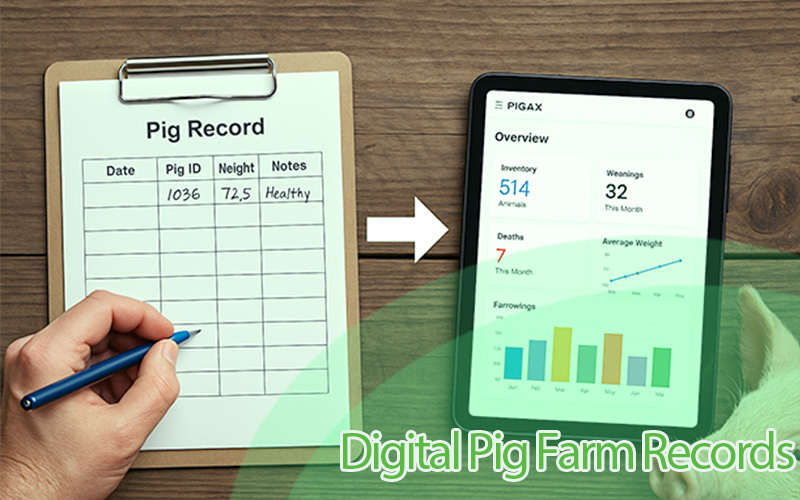Why keeping mortality records in a Pig farm is very important
It is important to keep a record of all pig mortalities in a pig farm for a number of reasons. Here are a few key reasons why:
-
Health monitoring: Tracking pig mortalities can help farmers to identify trends and patterns that may indicate underlying health issues within the herd. For example, if there is a sudden increase in pig mortalities, this could be an indication of an outbreak of a particular disease or other health issue. By keeping a record of mortalities, farmers can monitor the health of
 their pigs more closely and take action to address any issues that arise.
their pigs more closely and take action to address any issues that arise. -
Identifying problems: Keeping a record of pig mortalities can also help farmers to identify problems within their operations, such as management issues, environmental factors, or nutrition problems. By analyzing the data on mortalities, farmers can identify patterns or trends that may be contributing to the deaths of their pigs and take steps to address these issues.
-
Record-keeping requirements: In some cases, farmers may be required to keep records of pig mortalities for regulatory or compliance purposes. For example, many countries have laws or regulations that require farmers to report the number of pig mortalities to the government or other regulatory agencies. By keeping a record of pig mortalities, farmers can ensure that they are meeting these requirements and avoid any potential fines or penalties.
-
Financial impact: Pig mortalities can also have a significant financial impact on a pig farm, as the loss of a pig means a loss of potential income. By keeping a record of mortalities, farmers can track the financial impact of pig deaths and take steps to minimize this impact, such as by implementing measures to improve the health and well-being of their pigs.
In conclusion, keeping a record of pig mortalities is an important part of pig farm management. By tracking mortalities, farmers can monitor the health of their pigs, identify and address problems within their operations, meet regulatory requirements, and minimize the financial impact of pig deaths.




